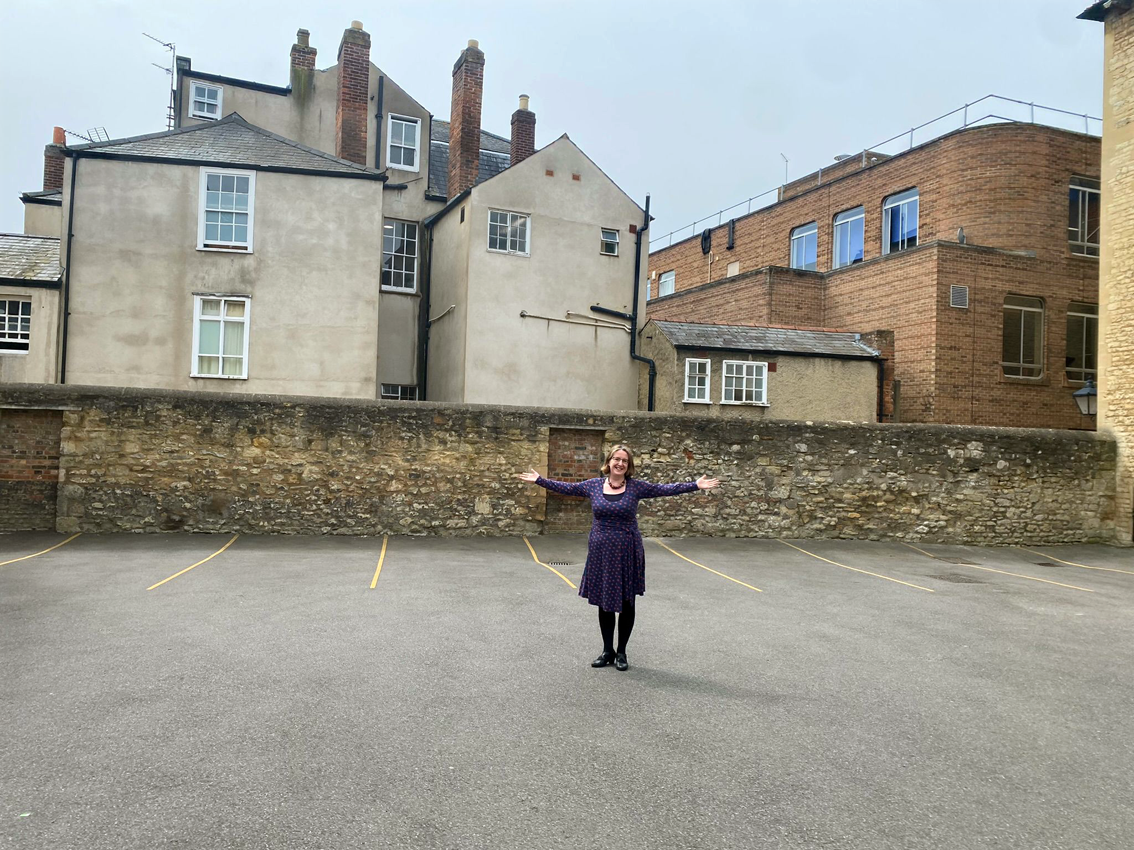Parking becomes playground at Christ Church Cathedral School

By Anna Fairhurst
Anna is Deputy Head Academic, Christ Church Cathedral School
Christ Church Cathedral School is a small, city-centre school with a focus on music. We have around 65 staff, most of whom are in every day, plus an unusually large number of music teachers.
Half our staff live outside Oxford, so we’ve always had staff parking. Around 22 cars were parked in the same playground that the children used at breaktime. This was a problem, but one it seemed impossible to fix. Pupils complained about not having enough space to play and there was constant concern about cars being damaged.
Thinking the impossible
Last year we started thinking the impossible: what if we got rid of the parking and gave the space to the children? The leadership team began talking to staff about trying different approaches to commuting. We emphasised the environmental benefits, the health benefits, and the fact that we wanted to take action ahead of the County Council introducing a Workplace Parking Levy.
Staff were willing to give it a go. I started to come in by train from 20 miles away, bringing my son with me and cycling the last stretch from Oxford station. Other staff also tried the switch, and several said they’d just needed a push to give alternatives a go. People tested various routes: train, Park & Ride, bus, cycling, a combination. The alternatives turned out to be easier than they’d thought, and often easier than driving.
A surprising reaction
In September 2023, after listening to staff experiences, we decided to change the car park from Easter 2024. We would cut 65% of spaces and extend the pupil playground. As a leadership team we were worried about this: the quality of our teachers is what makes our school what it is, and we did not want any of them to leave. We were pleasantly surprised by the reaction. Colleagues knew why we wanted to make the change, and they were supportive of the goals. Some were worried about it, but the ones who hadn’t yet tried out alternatives were all willing to give it a go.

Colleagues knew why we wanted to make the change, and they were supportive of the goals
We asked staff who really needed to drive to apply for one of the eight remaining parking spaces outside the main school, stating when they’d need it. Again, we were impressed. Staff took this seriously, and only a small number with good reasons asked to park in school. One colleague has requested a space for 2 days, taking the bus on the other 3 days when that space is being used by music teachers. Another couple of distant staff now car-pool, taking up one space rather than two.
What we need now
We’re really proud of our staff showing leadership on this, and we’re now working with parents who want to travel more sustainably. A small change we’ve made is to allow pupils to come to school in games kit when they have afternoon PE. Less to carry — and it means we can convert our changing room to a library. But for more of our parents to shift, we need safer cycling routes for children. This is the number one issue stopping parents at the moment. We also need better public buses. Our catchment area is widely scattered so not everyone can cycle.
For more of our parents to shift to sustainable travel, we need safer cycling routes for children
Turning our car park to playground has caused a huge shift in the way adults come to our site. Colleagues have worked together to take responsibility for reducing the number of cars at school for the benefit of the children and the environment. Not one member of staff has left because of this, and everyone is delighted with the results: parents, staff, prospective parents — and most of all our pupils.
